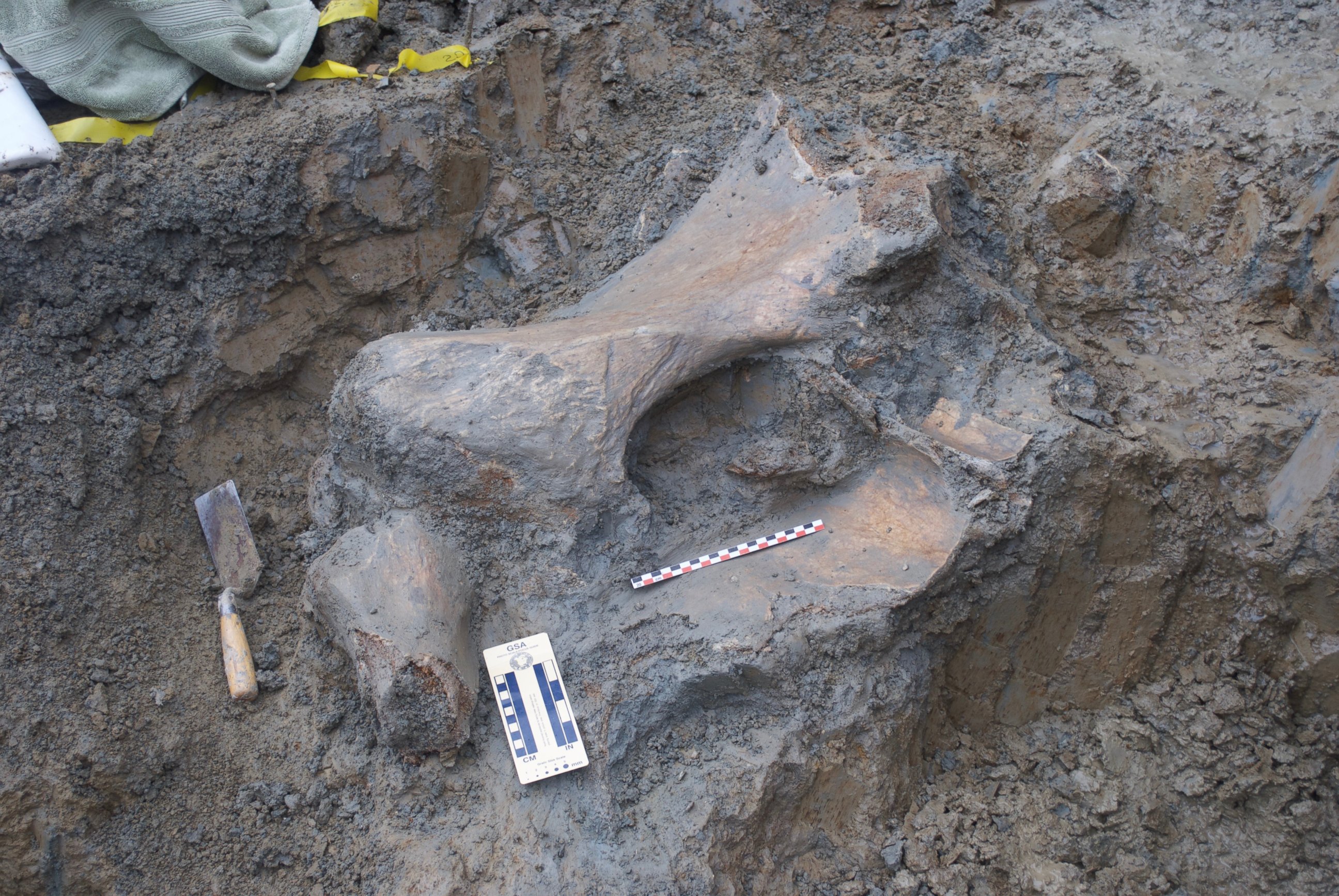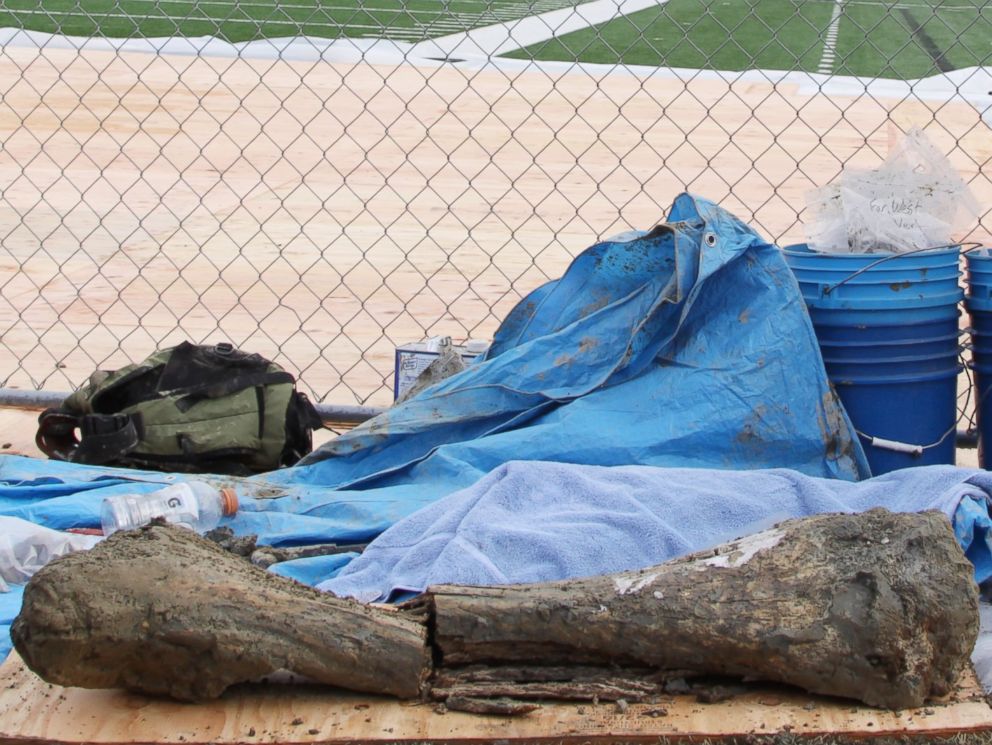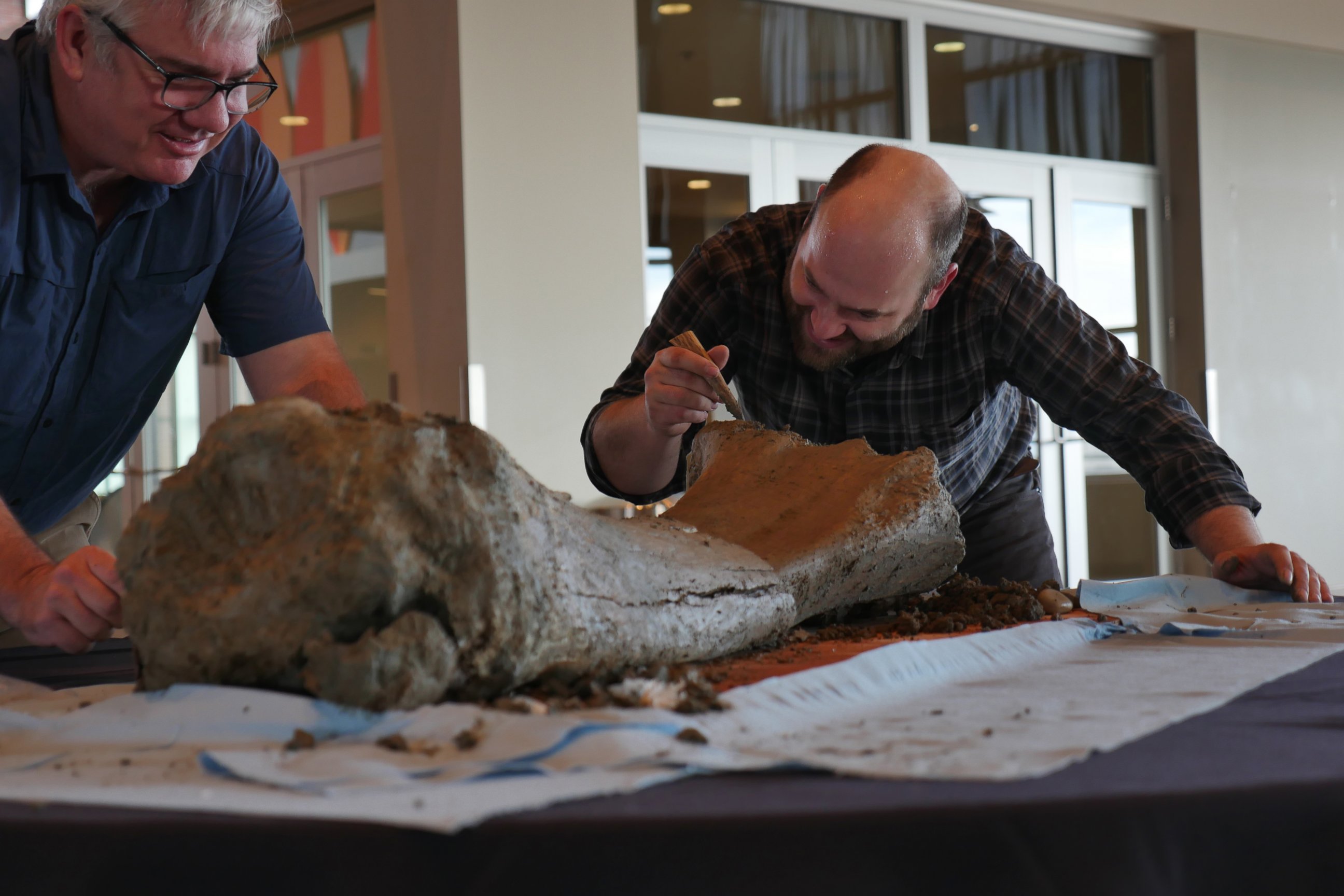Mammoth Bones Found Under Oregon State University Football Stadium
Football players weren't the only ones in the end zone.
— -- It was a big find.
When Oregon State University football players were going deep to make touchdown grabs in the end zone, they probably didn't realize that there were 10,000 year-old mammoth bones just feet below them.
More than 1,000 pieces of bone, ranging from bison to mammoth, were discovered on Monday afternoon at Reser Stadium during a construction project.
During a reconstruction project, an excavator said he saw what he believed to be a large log or stump, according to Steve Clark, vice president for university relations and marketing at OSU. But when the worker took a closer look, he realized the log was actually a large bone.
“We stopped work immediately in that area,” said Tim Sissel, senior project manager for Hunt/Fortis, a joint venture, the general contractor on the project. He explained that the construction company contacted OSU facilities who then called anthropology professor and archaeologist Loren Davis to the site.

Davis, one of his doctoral students and two members of the community collected the bone pieces, as well as the soil in the area, which students will sift through to retrieve any remnants of bones left in the soil.
Students were eating lunch in the player’s lounge, able to have a view of the excavation that was occurring below. “There was a lot of curiosity,” Sissel said.
One of the largest bones discovered was a mammoth femur, measuring about 5 feet long, which Davis said could mean the mammoth was anywhere from 14 to 15 feet or more in height according to Clark.

“What we learned from Loren Davis is that animals of these species were customary to the Willamette Valley 10,000 years ago or more,” Clark said.
The Willamette Valley attracted not only mammoths but also large bears, beavers, lions, tigers, bison and possibly even camels, as identified by the bones. There was a pond in the valley where animals may have gone to drink. It was also where they would go if they were sick and ready to die, according to Clark.
There have been discoveries of extinct species about 20 miles away from OSU, but this was the first time ancient bones were found on campus, according to Clark.
While there were countless pieces of animal bone found, there were no artifacts or human bone discovered. “If it were human bones, it would’ve taken a totally different direction,” Sissel said. The construction process could have been further delayed or stopped if the land had artifacts underground.
Fortunately for the contractors and construction workers, the bone collection ended on Tuesday and they were able to get back to work the same day.
Davis is currently keeping the bones moist to preserve them. He later plans to apply preservation chemicals to keep the bones solid and to also carbon date them.

Now archaeology students will be identifying bones in class that were found only a few hundred feet away from them. “It’s just a great opportunity for them,” Davis said, “to get first-hand experience of what they look like and also be part of the discovery.”




